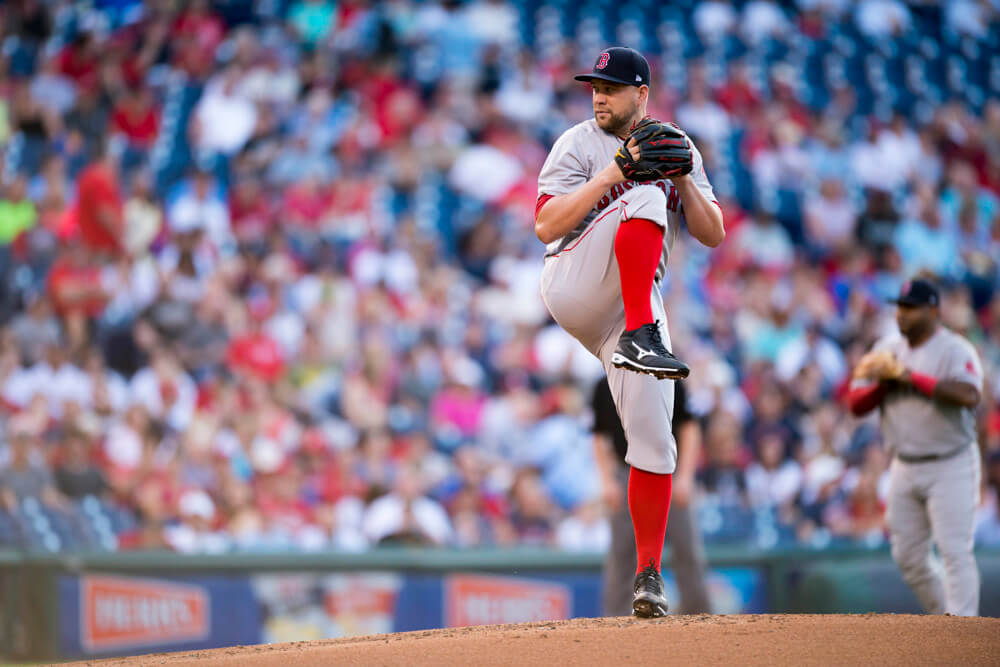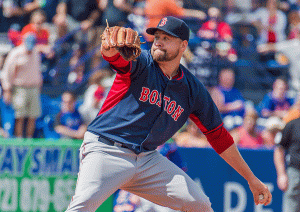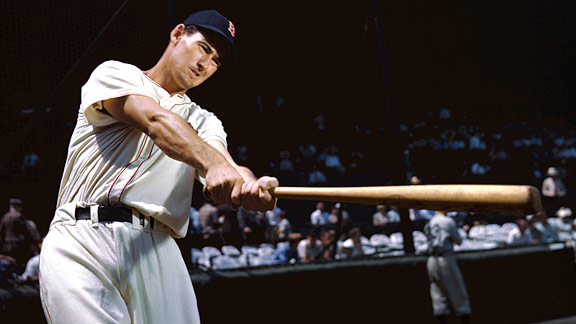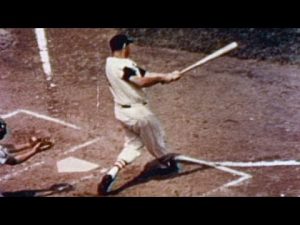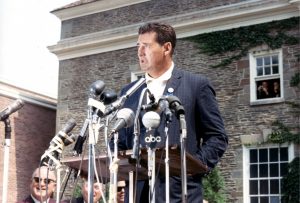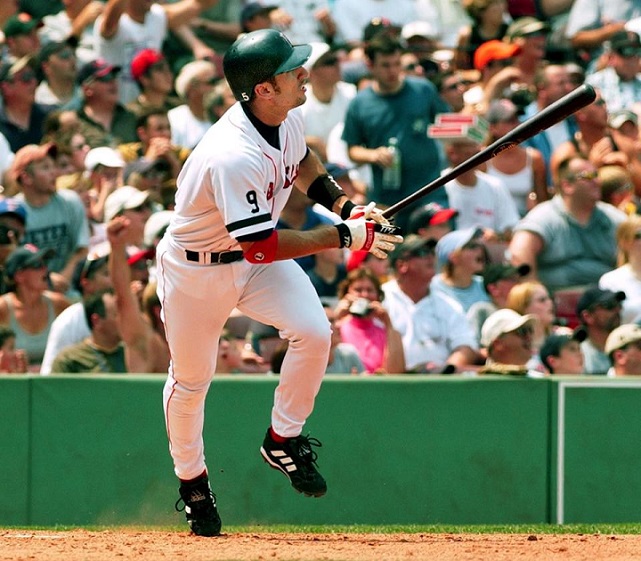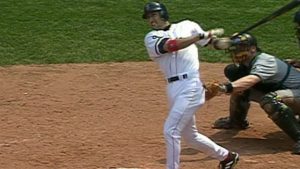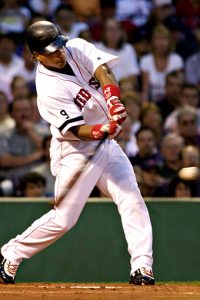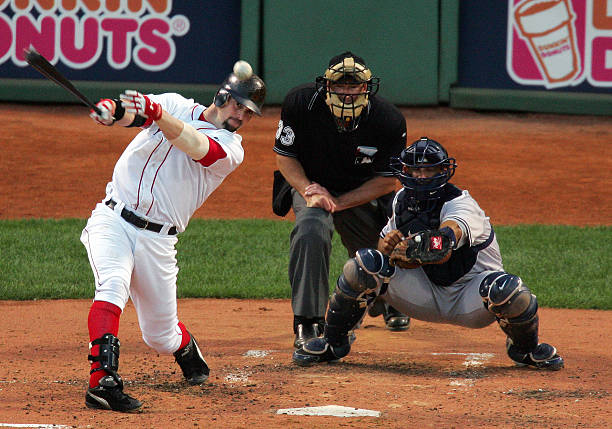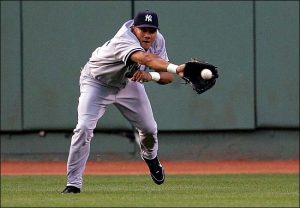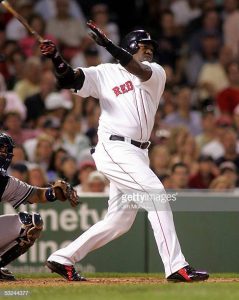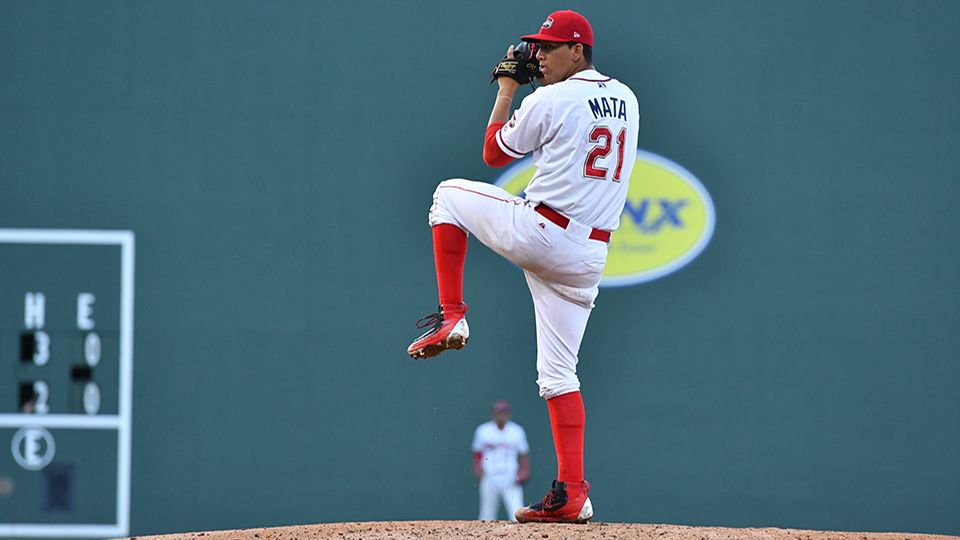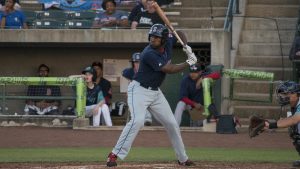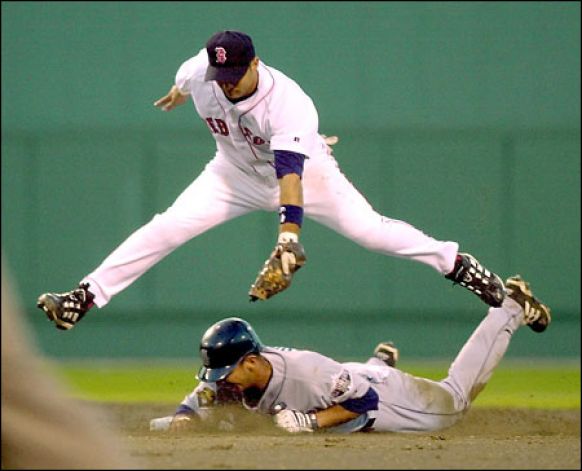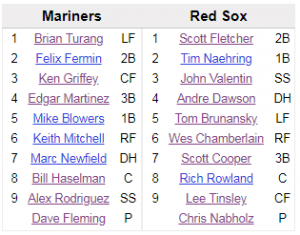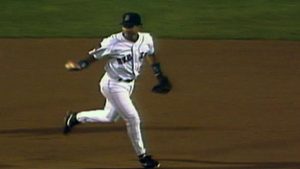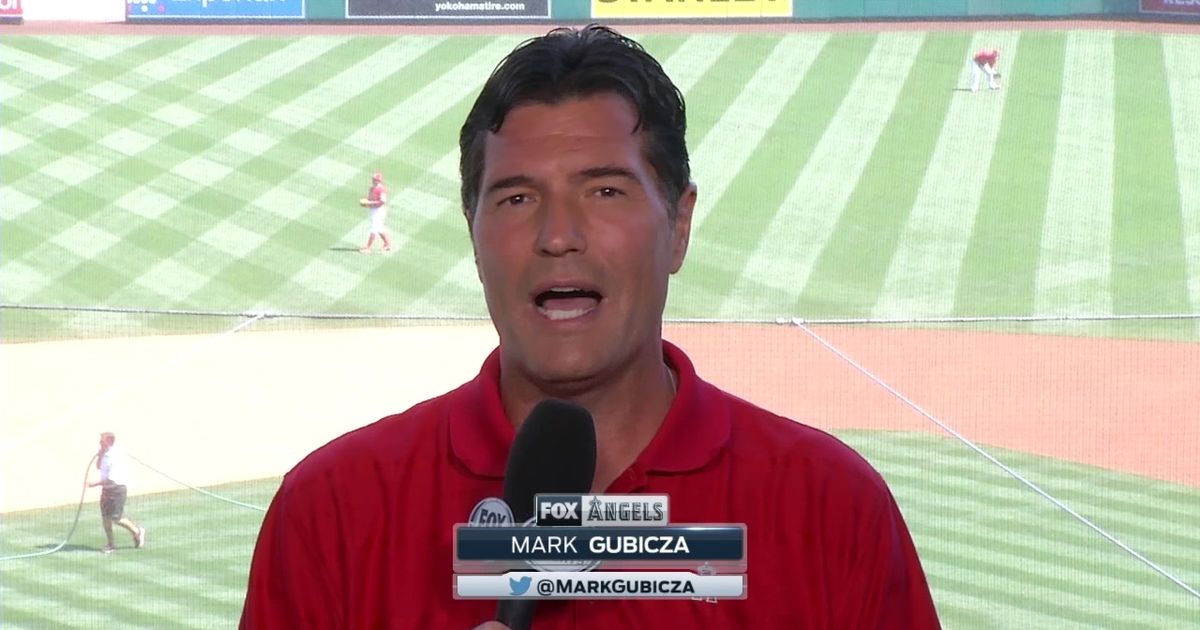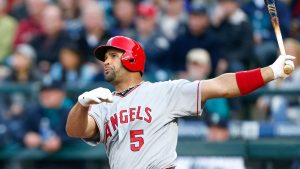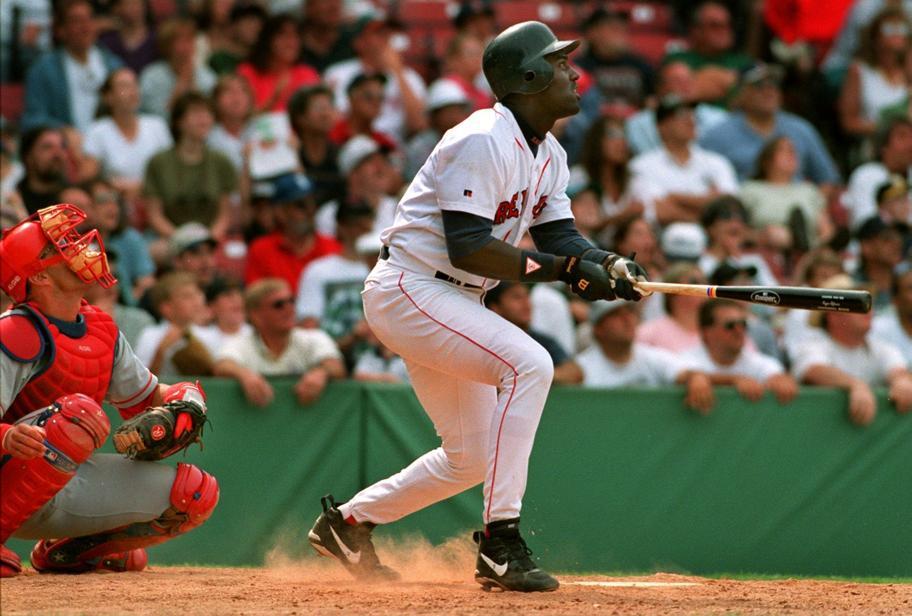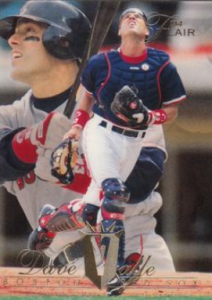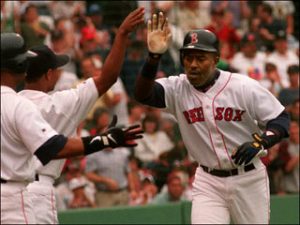Mookie Betts hit for the cycle on Thursday night, becoming the 21st player in Red Sox history to complete the feat. Needing a home run in the ninth, Betts fouled off a very hittable pitch and seemed to realize he had missed one. He made up for it, cracking a no doubter over the left field wall to collect his cycle. So who were the 20 players before him to get the cycle?
The Early Days
Buck Freeman was the first player to hit for the cycle in franchise history. Known as the Boston Americans when Freeman completed the cycle, Freeman accomplished the feat on June 21, 1903. He did so in a 12-7 Boston victory over the Cleveland Blues, or Cleveland Naps, depending upon where you look. The Cleveland franchise had acquired superstar Nap Lajoie the previous season and were beginning to be called the “Naps” after him.
Patsy Dougherty accomplished the feat not much more than a month after Freeman. Dougherty’s cycle came on July 29, 1903 against the New York Highlanders. Dougherty was in his second Major League season, one in which he led the American League with 195 base hits.
Tris Speaker hit for the cycle on June 9, 1912, becoming the first player to do so after the franchise became known as the Red Sox. One of the greatest center fielders of all-time, Speaker drove in three runs in a 9-2 victory over the St. Louis Browns that day. His batting average at the conclusion of the game was .405, and he went on to win the MVP Award that season.
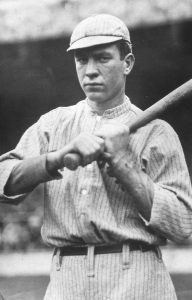
Roy Carlyle hit for the cycle on July 21, 1925 in a 6-3 win over the White Sox. Carlyle hit his double and triple off future Hall of Famer Red Faber, and his home run off another Hall of Famer in Chief Bender. Carlyle only played two seasons despite batting .312 due to his horrible defense.
Moose Solters hit for the cycle in an 8-6 loss to the Tigers on August 19, 1934. Solters had a good rookie season that year but was sent to St. Louis the following season. Moose’s cycle came against General Crowder; got to love the old baseball names.
The 1940’s
Joe Cronin was the Red Sox player/manager when he hit for the cycle on August 2, 1940. Cronin was one of two Red Sox to drive in four runs and one of three to homer in a 12-9 victory over the Tigers. Cronin’s number four is retired by the Boston Red Sox.
Leon Culberson was a rookie for the Red Sox when he hit for the cycle on July 3, 1943. Batting leadoff, Culberson had the four hits plus a walk. His home run was an inside-the-park home run in the eighth inning of a 12-4 win over the Cleveland Indians.
Bobby Doerr’s cycle came in the second game of a doubleheader with the Browns on May 17, 1944. The Red Sox had won game one 5-1 but would actually lose the second game despite Doerr’s cycle by a score of 12-8. Doerr drove in two runs and scored three. He is a Red Sox Hall of Famer, a Major League Baseball Hall of Famer, has his number retired by the team and is the greatest second baseman in franchise history.
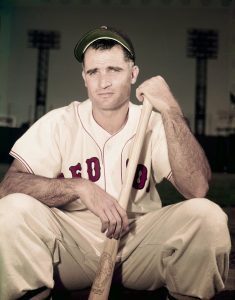
Bob Johnson hit for the cycle on July 6, 1944, less than two months after Bobby Doerr’s cycle. In fact, Doerr also had four hits in this game, hitting a double and a triple, but settling for two singles. Bob Johnson completed the cycle and scored four runs in the Red Sox 13-3 win over the Tigers.
Ted Williams hit for the only cycle of his career on July 21, 1946. Williams picked up three hits in a 5-0 win over the Browns during the day. In the nightcap, Williams hit his way around the bases, hitting for the cycle in a 7-4 win. Williams contributed seven hits during the doubleheader sweep.
Bobby Doerr is still the only player in franchise history to hit for the cycle twice. He accomplished it a second time nearly three year after the first, on May 13, 1947. The Red Sox pulverized the White Sox that day 19-6. Doerr hit for the cycle and Ted Williams homered twice in the destruction.
The Cycles Slow Down
Lu Clinton achieved the feat in a 15 inning game on July 13, 1962. Don’t worry; Clinton had already accomplished the feat before extra innings. He tacked on another single in the 15th inning, his fifth hit of the game which scored Carl Yastrzemski for the winning run. Clinton drove in four runs and scored four runs in the 11-10 Red Sox win.
Carl Yastrzemski hit for the cycle on May 14, 1965 in a 12-8 loss in 10 innings to the Tigers. Yaz homered in each of the first two innings, starting the night off with a bang. He finished the game 5-5 with five runs batted in, but didn’t have much help.
Bob Watson became the first player to hit for the cycle in both the National League and American League on September 15, 1979. Watson completed the feat in the ninth inning with a two-run homer as the Red Sox beat the Orioles 10-2 at Memorial Stadium. Watson batted .337 with 13 home runs in a partial season with the Red Sox that season before joining the Yankees as a free agent in the offseason. As Vice President of Major League Baseball, he would draw some attention of having a negative bias towards the Red Sox.
The 1980’s
Fred Lynn hit for the cycle against the Twins on May 13, 1980, becoming the second Red Sox player to hit for the cycle on May 13th. Lynn tripled home Rick Burleson in the bottom of the eighth to complete the cycle. It was one of four runs driven in by Lynn during the Red Sox 10-5 victory.
Dwight Evans sealed his cycle with a dramatic flourish on June 28, 1984. Tied at six with the Mariners, Dwight Evans came up with two men on base and two outs in the bottom of the 11th. He hit a walk-off three-run homer off Ed Nunez to win the game 9-6. One of the more underrated players in the game, Dewey is currently the greatest right fielder in franchise history.
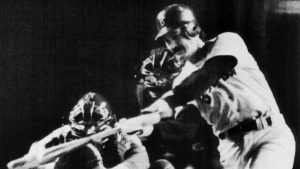
Rich Gedman performed the feat on September 18, 1985. It’s not every day a catcher completes the cycle, let alone gets a triple. Gedman did just that however in a 13-1 defeat of the Blue Jays. Gedman’s triple came with the bases loaded in the fourth inning to put the Sox ahead 8-0. He drove in seven runs total in the game. Wade Boggs also had four hits as the Sox socked 18 of them on the day.
Mike Greenwell cycled on September 14, 1988. The Red Sox needed it, squeaking past the Orioles 4-3. The MVP candidate went 4-4 and scored three of the Red Sox runs. He homered in the second, then scored after his ground-rule double in the fourth. Leading off the sixth, Greenwell tripled on a misplayed fly ball and scored to put the Red Sox ahead.
The Last Twenty-Five Years
Scott Cooper hit for his at Kaufmann Stadium as part of a 22-11 rout of the Royals. In just the eighth game of the 1994 season, on April 12, Cooper went 5-6 with 5 RBI, doubling twice in the cycle. Read about the game and watch the video of his cycle here.
John Valentin homered in the first, tripled in the third, singled in the fourth and doubled in the sixth, all off Joe Magrane. The Red Sox beat the White Sox 7-4 on June 6, 1996. Valentin was 4-4 as he didn’t receive any other at-bats. Take a look.
Brock Holt became the first Red Sox to hit for the cycle in nearly two decades on June 16, 2015. Holt batted leadoff that day, getting three of his hits off Atlanta starter Julio Teheran. He tripled in the eighth off Sugar Ray Marimon to complete the achievement. The Red Sox beat the Braves 9-4.
Mookie Betts accomplished the feat just the other night, and it was seemingly just a matter of time. The Red Sox lost the game, but it is always fun to see someone on the hometown team attain this. Mookie’s homer in the ninth gave us joy during a loss.

